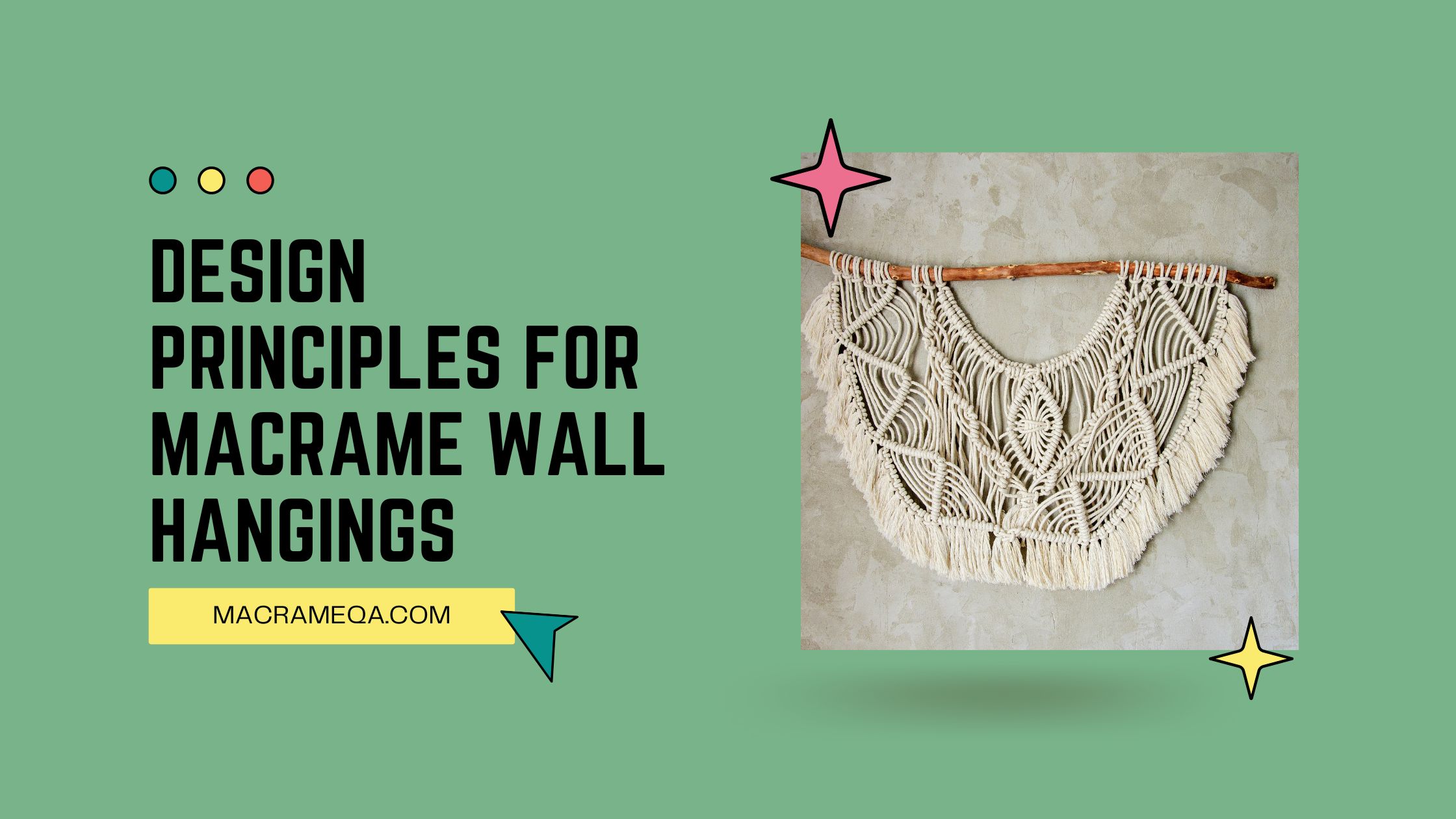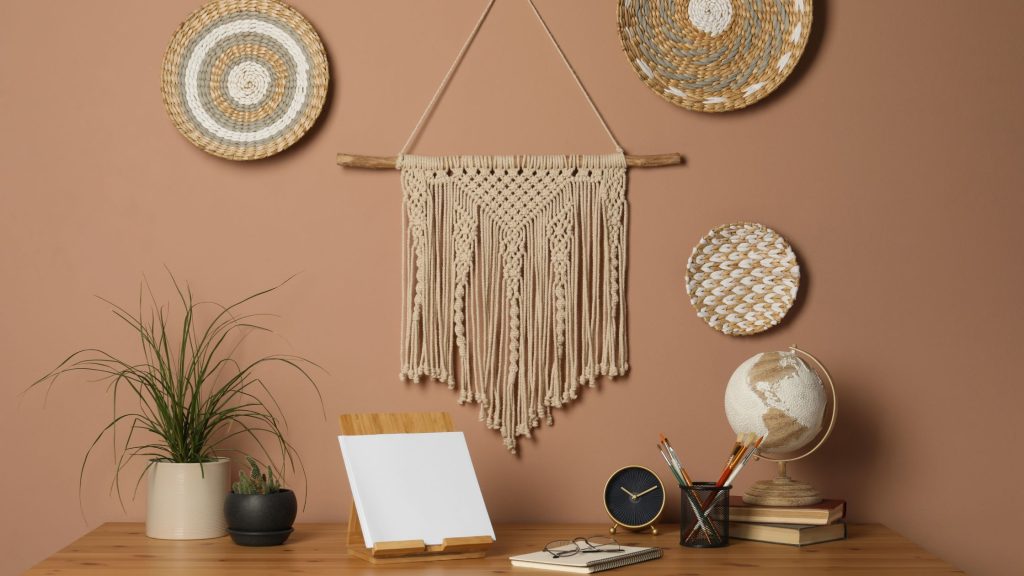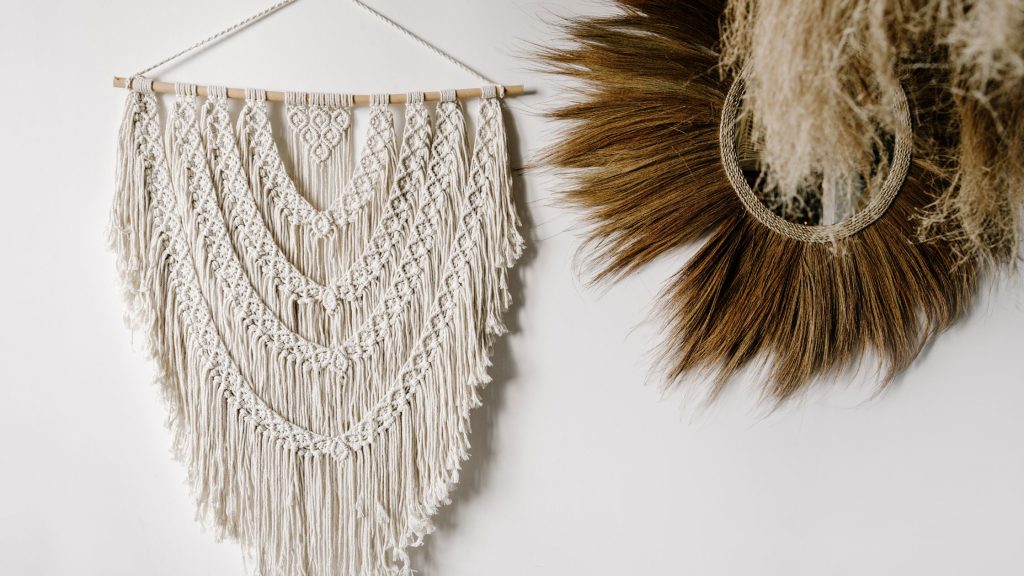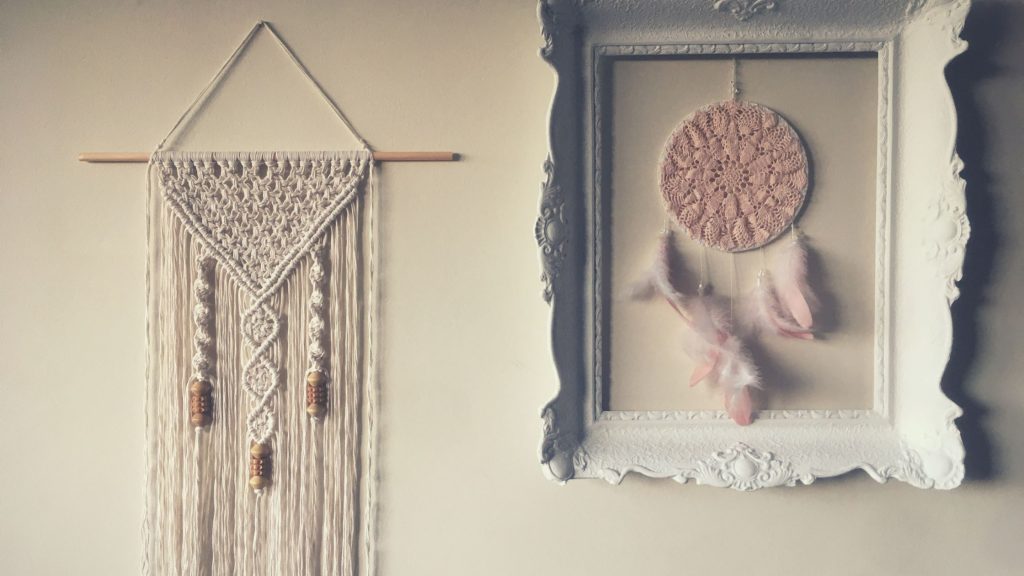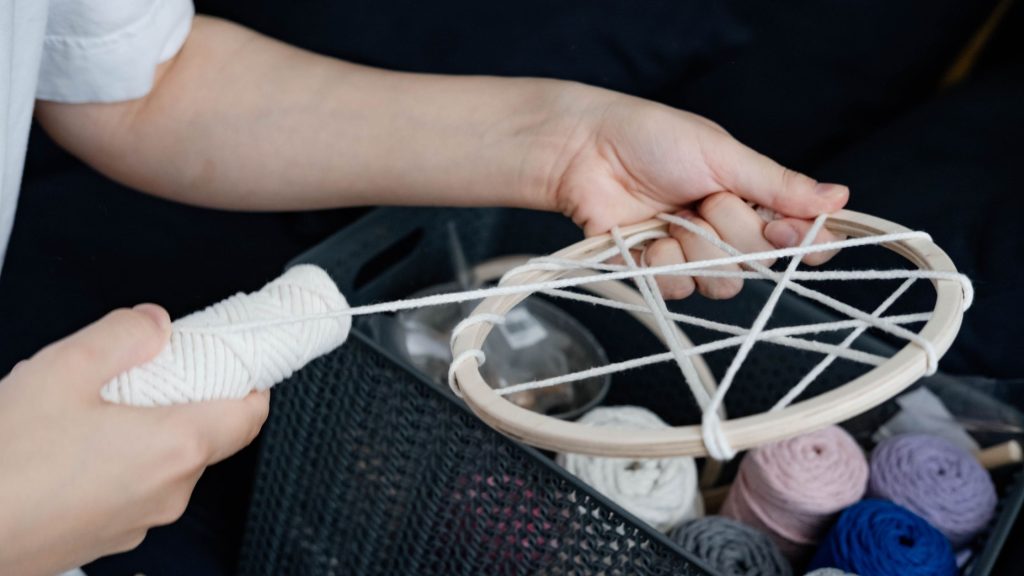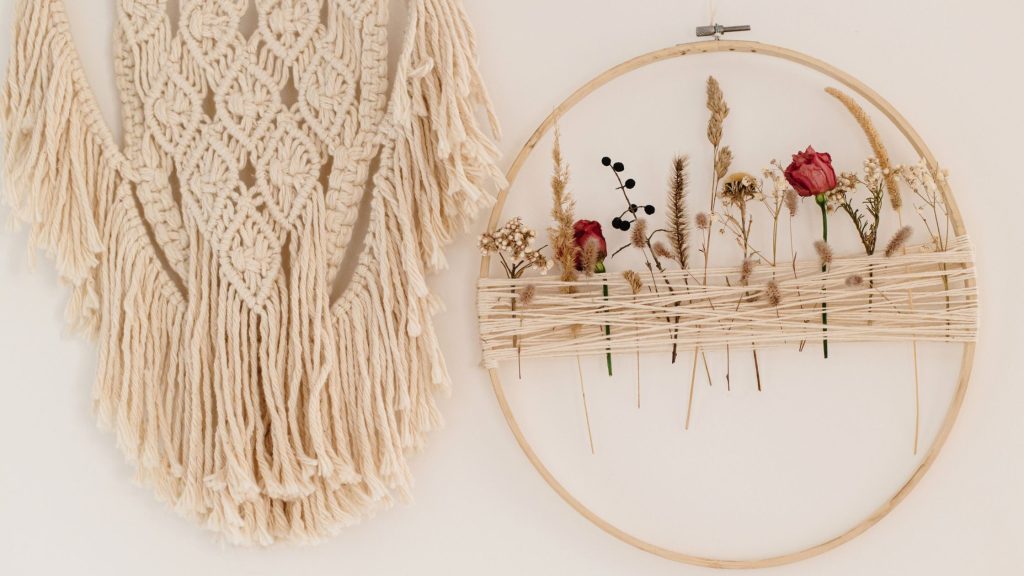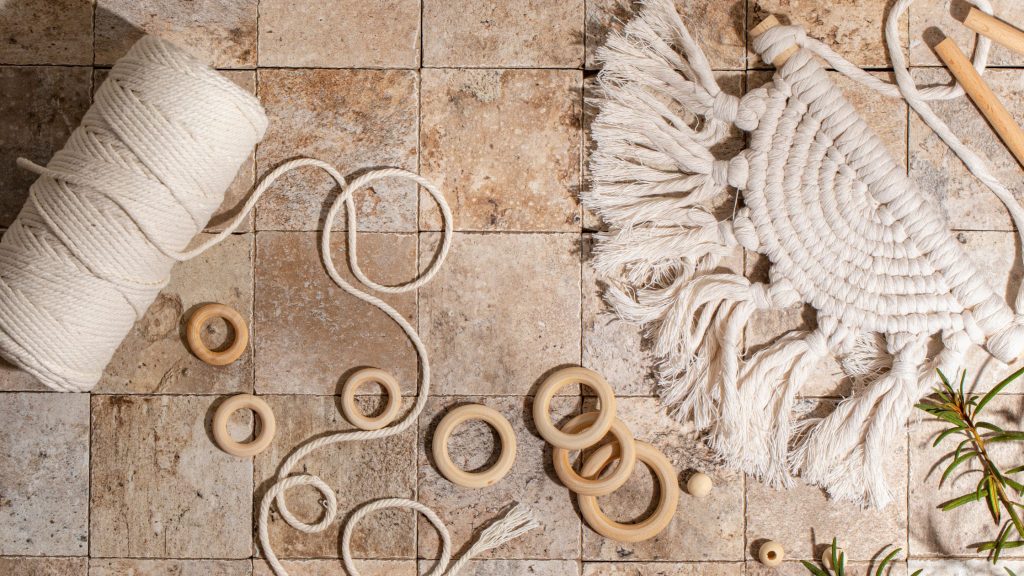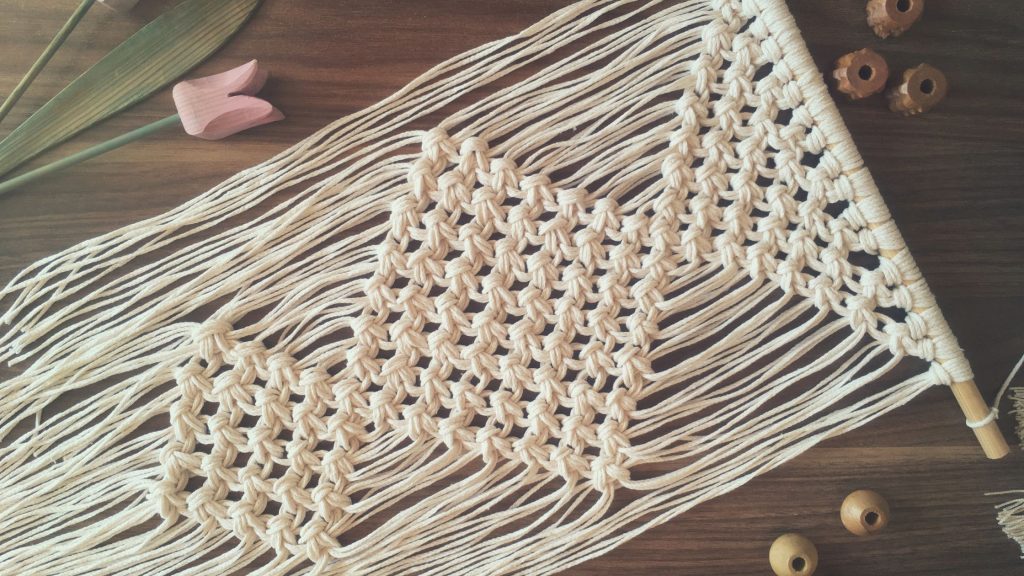Are you ready to add a touch of handmade beauty to your walls? In this article, we will explore the design principles that can elevate your macrame wall hangings to a whole new level. From understanding the importance of knots and patterns to mastering the art of balance and texture, you will discover the key elements that make these intricate creations truly captivating. So, get ready to unleash your creative spirit and transform any space into a stunning work of art with macrame!
Design Principles For Macrame Wall Hangings
Macrame wall hangings are a popular choice for adding a touch of texture and visual interest to any space. Whether you’re a beginner or a seasoned practitioner of macrame, understanding the design principles behind this art form can help you create stunning pieces that enhance your home decor. In this article, we will explore the key design principles for macrame wall hangings, from color and texture to pattern and shape, along with insights into materials, techniques, purpose, and maintenance.
Color
Contrast
In macrame wall hangings, contrast plays a crucial role in creating visual interest and drawing attention to specific elements. By incorporating contrasting colors into your design, you can achieve a dynamic look that catches the eye. Consider using a mix of light and dark shades or complementary colors to create a striking and balanced composition.
Harmony
While contrast is important, harmony ensures that all the different color elements in your macrame wall hanging come together cohesively. Choosing colors from the same color family or palette can create a sense of harmony, allowing each color to complement the others and create a pleasing visual flow.
Balance
Balance is essential in macrame wall hangings, as it ensures that the design feels stable and visually appealing. You can achieve balance by distributing colors evenly across the piece or by strategically placing a bold color in one area to counterbalance a more neutral section. Experiment with different color combinations and arrangements to find the right balance for your design.
Complementary Colors
Using complementary colors is an effective way to make your macrame wall hanging stand out. Complementary colors are those that are opposite each other on the color wheel, such as blue and orange or red and green. When combined, these colors create high contrast and can add a vibrant and eye-catching element to your design.
Monochromatic Colors
If you prefer a more subtle and understated look, using monochromatic colors in your macrame wall hanging can be an excellent choice. Monochromatic color schemes involve using different shades and tones of a single color. This approach creates a sense of harmony and sophistication, allowing the texture and patterns in your macrame to take center stage.
Texture
Variety
Texture is a crucial element in macrame wall hangings as it adds depth and visual interest to the piece. Incorporating a variety of textures can create an engaging and dynamic look. You can achieve this by using different thicknesses of cords, adding fringe or tassels, or incorporating beads or other embellishments into your design.
Contrast
Just as with color, contrast in texture can create a captivating and visually pleasing macrame wall hanging. By combining smooth and rough textures or incorporating different knotting techniques, you can add depth and dimension to your design. Experiment with different types of cords or incorporate unconventional materials to achieve contrast and make your wall hanging truly unique.
Tactility
One of the joys of macrame wall hangings is their tactile nature. When designing your piece, consider the tactile experience it will provide. Incorporating textures that invite touch can create a sensory experience for anyone who interacts with your wall hanging. This can be achieved through the use of soft and plush materials or by incorporating elements like feathers or shells.
Pattern
Geometric Patterns
Geometric patterns are a popular choice in macrame wall hangings, as they create a sense of order, symmetry, and precision. Incorporating shapes such as triangles, squares, or diamonds can add structure and visual interest to your design. Experiment with different knotting techniques to create geometric patterns that suit your personal style.
Organic Patterns
If you prefer a more natural and free-flowing look, organic patterns are an excellent choice for your macrame wall hanging. Organic patterns can be achieved by using knotting techniques like the spiral or incorporating elements like leaves or flowers into your design. These patterns create a sense of movement and a connection to nature, adding a calming and whimsical touch to your space.
Symmetry
Symmetry is a design principle that many people find visually pleasing. In macrame wall hangings, symmetry can be achieved by mirroring knots or patterns on either side of the piece. This creates a sense of balance and stability, making your wall hanging feel harmonious and pleasing to the eye.
Asymmetry
On the other hand, asymmetry can create a sense of visual tension and intrigue in your macrame wall hanging. By intentionally breaking the symmetry and creating an uneven distribution of knots or patterns, you can add a sense of movement and playfulness to your design. Asymmetry can create a more relaxed and informal look, perfect for adding a bohemian or eclectic touch to your space.
Repetition
Repetition is a powerful design principle for creating unity and visual interest in macrame wall hangings. By repeating a specific knot or pattern throughout your design, you can create a cohesive and harmonious look. Repetition can also help create a sense of rhythm and flow, adding a dynamic element to your wall hanging.
Size and Proportion
Scale
Choosing the right scale for your macrame wall hanging is essential in creating a visually balanced and harmonious composition. Consider the size of the wall or room where the piece will be displayed. A large wall hanging in a small room may overwhelm the space, while a small wall hanging on a large wall may feel insignificant. Experiment with different sizes and proportions until you find the perfect fit.
Spatial Relationships
Understanding spatial relationships is crucial in macrame wall hanging design. Consider how your piece will interact with the surrounding space and objects. Leave enough room around the wall hanging to allow it to breathe and feel visually balanced. Also, consider the distance between different elements within your design to maintain a sense of proportion and harmony.
Golden Ratio
The Golden Ratio is a mathematical principle that has been used in art and design for centuries. It is believed to create a visually pleasing and aesthetically balanced composition. Applying the Golden Ratio to your macrame wall hanging involves dividing the piece into proportional sections based on specific ratios. Experiment with incorporating these ratios into your design to create an aesthetically pleasing and harmonious composition.
Shape
Curves
Curves can add a sense of softness and fluidity to your macrame wall hanging. Experiment with incorporating curved lines, knots, or patterns to create a more organic and flowing look. Curves can help soften the overall design and make your wall hanging feel more inviting and relaxed.
Angles
Angles, on the other hand, add a sense of structure and geometric precision to your macrame wall hanging. Incorporating sharp angles or angular shapes can create a more dynamic and visually striking design. Angles can contrast with the softness of the cords, adding a touch of modernity and edginess to your piece.
Negative Space
Negative space refers to the empty or unoccupied areas within your macrame wall hanging. It is just as essential as the filled spaces and can create a sense of balance and breathing room within your design. Embrace and utilize negative space by leaving intentional gaps or creating open, unknotted areas. This will help highlight the intricate details of your knots and patterns, adding depth and dimension to your wall hanging.
Materials
Natural Fibers
The choice of materials can greatly impact the overall look and feel of your macrame wall hanging. Natural fibers such as cotton, jute, or hemp are commonly used in macrame due to their softness, durability, and versatility. These fibers have a beautiful natural luster and can be easily dyed, allowing you to experiment with a wide range of colors and variations.
Synthetic Materials
Synthetic materials, such as nylon or polyester cords, offer a different aesthetic and texture compared to natural fibers. They are often smoother and more vibrant in color. Synthetic materials can give your macrame wall hanging a modern and polished look. Experiment with different materials to achieve the desired texture and visual impact for your design.
Beads and Embellishments
Beads and embellishments can add a touch of elegance and uniqueness to your macrame wall hanging. They can be incorporated into the knots or used as decorative accents within the design. Beads can provide additional texture, color, and visual interest, enhancing the overall aesthetic of your piece. Experiment with different types and sizes of beads to add a personalized and eye-catching element to your wall hanging.
Techniques
Basic Knots
Mastering basic macrame knots is essential for creating any macrame wall hanging. A few essential knots include the Lark’s Head knot, Square knot, and Half Hitch knot. These knots form the foundation of most macrame designs and can be combined and varied to create intricate patterns and textures. Practice these basic knots until you feel confident in executing them, as they will form the basis of your macrame creations.
Advanced Knots
As you become more comfortable with basic knots, you can start exploring more advanced macrame knots. Advanced knots, such as the Alternating Square knot, Diagonal Double Half Hitch, or the Josephine knot, offer endless possibilities for creating complex patterns and textures. These knots can add intricacy and richness to your macrame wall hangings, allowing you to create truly unique and impressive designs.
Macrame Braiding
Macrame braiding, also known as micro-macrame, involves using thinner cords and intricate knotting techniques to create delicate and detailed designs. This technique is ideal for creating fine jewelry or intricate wall hangings with a high level of detail. Macrame braiding requires patience and precision but can result in stunning and intricate pieces of art.
Purpose and Placement
Intended Use
Consider the intended use of your macrame wall hanging when designing it. Is it intended to be a focal point in a room, or is it meant to add subtle texture to a larger composition? Understanding the purpose of your wall hanging will help guide your design decisions, including the choice of colors, patterns, and size.
Room and Wall Size
The size of the room and the wall where your macrame wall hanging will be displayed is an important factor to consider. A large wall hanging in a small space can overpower the room, while a small wall hanging in a large room might get lost. Take measurements of the available space and consider the overall proportions to ensure the wall hanging fits harmoniously within the room.
Lighting
Lighting can greatly affect the visual impact of your macrame wall hanging. Consider the amount and quality of light in the room where your piece will be displayed. Natural light can enhance the textures and colors of your design, while artificial lighting can create a specific ambiance. Experiment with different lighting conditions to fully appreciate the beauty of your macrame wall hanging.
Personal Style
Individuality
One of the joys of macrame is the ability to infuse your personal style into your designs. Explore different techniques, patterns, and color combinations that resonate with your individuality. Whether you prefer bold and vibrant designs or more minimalist and understated pieces, embrace your personal style and let it shine through your macrame wall hangings.
Incorporating Personal Elements
Adding personal elements to your macrame wall hanging can make it even more special and meaningful. Consider incorporating items like feathers, seashells, or pieces of driftwood that hold sentimental value or reflect your personal interests. These elements can add a unique touch to your piece and make it a reflection of your personal journey.
Maintenance
Cleaning
To keep your macrame wall hanging looking its best, regular cleaning is essential. Dust or vacuum your piece gently to remove any dirt and debris that may accumulate over time. For more delicate pieces or intricate designs, consider using a small brush or compressed air to avoid damaging the knots or decorative elements. Follow any specific care instructions provided with the materials you used.
Avoiding Sunlight Damage
Sunlight exposure can cause fading and deterioration of the fibers used in your macrame wall hanging. Avoid displaying your piece in direct sunlight or near windows where it may be exposed to prolonged UV rays. If natural light is desired, consider using UV-blocking window treatments or rotating your wall hanging periodically to minimize sun damage.
Conclusion
As you can see, there are several key design principles to consider when creating macrame wall hangings. From color and texture to pattern and shape, each element plays a crucial role in achieving a visually appealing and harmonious design. By experimenting with different materials, techniques, and styles, you can create stunning pieces that reflect your personal style and enhance your living space. Remember to also consider the purpose and placement of your macrame wall hanging, and to maintain it properly to ensure its long-lasting beauty. With these design principles in mind, let your creativity flourish and enjoy the art of macrame!

